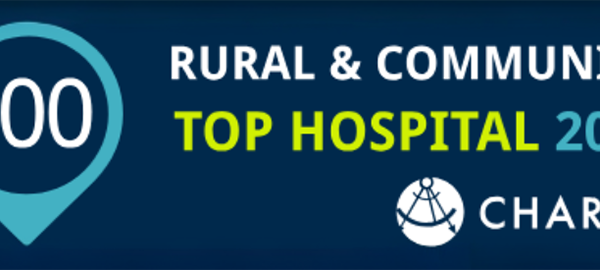It’s Health Information Professionals (HIP) Week, sponsored by the American Health Information Management Association (AHIMA). HIP Week offers the opportunity to better appreciate a vital aspect of the health care industry – Health Information Management (HIM).
The work of health information professionals often occurs behind the scenes yet is essential to quality patient care and effective business decisions. We want to recognize our HIM Baptist team members whose diligent work supports our hospitals, clinics and communities through the right information at the right time to provide the right care.
To learn more about the multifaceted world of HIM, we talked with Baptist’s System Director of Health Information Management, Carol Eyer, RHIA, CHC, CRCR.
What would you like everyone to understand about the work that health information professionals do?
HIM is part of the organization’s Revenue Cycle and includes a variety of specialized roles. Together, those uniquely intersect patient care, technology and business to drive innovation and population health. For example, if you’ve ever heard statistics about how many heart attacks occurred in a given year among a certain age population, HIM-reported codes are often behind that data, and other data like the number of eye cataract procedures performed or live births (single, twin, triplet, etc.) or any health circumstance you can imagine. Every condition or disease process and the treatment a patient receives is assigned an alphanumeric code by a medical coding specialist, and/or clinical documentation integrity (CDI) specialist. It’s a translation from the physician’s medical record documentation into a special code set used universally in most developed countries.
Statistics across the entire health care industry are derived from data generated through these codes. Important factors impacting health care today such as social determinants of health (SDoH), risk adjustment and value-based health care rely on this data.
Will you describe some of the HIM jobs at Baptist?
There is no shortage of variety among HIM roles! Our team includes medical transcriptionists who type, or transcribe, reports dictated by physicians, or they may edit reports otherwise produced through voice to text recognition technology.
We mentioned coding specialists who translate medical documentation into alphanumeric codes after a patient’s visit, and there are different levels of coders based on skill set and experience level. And CDI specialists partnering directly with physicians during hospitalization ensure their charting accurately reflects a patient’s severity of illness. All of this work comes together among those special codes to tell the patient’s health encounter story. Coding quality specialists further ensure correct code assignment through thousands of record reviews. Coding holds a pivotal role in this country for how health organizations are reimbursed for care provided.
Other HIM specialists maintain the integrity of our enterprise master patient index, or eMPI. This is a huge database of all patients presenting for care throughout Baptist. The team ensures each patient has a single, unique record and removes or merges duplicates as needed so all information appears among one record. This is critical to patient safety during care. For example, a same patient admitted under different but similar names (Pat Smith, Patti Smith, Patricia A. Smith, Trisha Smith) could result in multiple records over time, where medical history is on one record and not another. It’s important for the clinician to see all medical information, such as allergies, blood type or medications, in one record.
Duplicate records also create Revenue Cycle issues where all codes are not centralized to a single encounter, resulting in inaccurate claims and insurance company denials, potentially resulting in the patient becoming responsible for charges. The eMPI processes involve much detailed research.
Other analysts and coordinators assist new parents with birth certificate completion to file with the state Office of Vital Records, generating new Social Security numbers, facilitating social program enrollment and more. Others assist patients and their authorized requesters with receiving medical record copies for a wide variety of needs. Still others scan and index paper record components so those can be retrieved electronically. All are responsible for ensuring timely medical record completion per regulatory standards and organization bylaws to support accurate HIM processes.
Lastly, there are leadership roles like mine to support all the above, including directors, managers, supervisors and leads. Our leaders monitor performance metrics and quality outcomes for how HIM provides services to align with the organization’s mission, vision and values.
All actively partner with clinicians, analytics, informatics, legal, compliance, privacy and security, revenue cycle and others to support and empower lifesaving care.
Why is it important to encourage others to consider careers in HIM?
To start, few know about the field at all, while fewer are entering it each year than those aging out and retiring, coders particularly.
I’d love to get the word out that there are rewarding health care career options other than direct patient care or clinical roles. I originally wanted to be in direct patient care and realized differently through a job shadowing experience. We all have our calling, and I’m thankful for clinicians who can lay hands on and provide healing like they do in our system. For others, HIM offers a meaningful, challenging opportunity among Revenue Cycle (part of the Finance team).
Maybe someone reading this knows a friend or family member looking for a way to get into health care other than clinical roles. I encourage them to check out HIM! Our roles offer great variety, part of what’s always appealed to me about the profession. Education and certification requirements vary by role, including master’s, bachelor’s or associate degrees. Several certifications are available, and I’m happy to connect with any interested to learn more.
How does patient data from Baptist impact decisions in care approach or help facilitate acquiring new equipment?
Those alphanumeric codes we talked about feed a broad array of industry databases as a baseline for many statistics. One example is Leapfrog, which ranks how hospitals perform in delivering care based on coded and other pertinent outcomes data. These statistics go beyond the quantitative, like how many heart transplants or valve replacements were performed, to illustrate the quality of that care, a portrait painted with data. This allows a health organization to review and assess how it improves quality metrics to positively impact patient care.
Overall, health information is a driver in decision-making processes to invest in new technologies, expand services or purchase equipment. Can we deliver care more effectively? Can we deliver it at a lower cost and get our patients home more quickly? Data fundamentally impacts how we move forward as an organization.
Is there anything you’d like to add?
I want to thank the amazing organization we serve and those many recognized above who partner with us daily. It’s that spirit of partnership that fuels shared success in how we collectively support our community. And during HIP Week, I’m especially grateful for our very own skilled, talented health information professionals and celebrate them!






